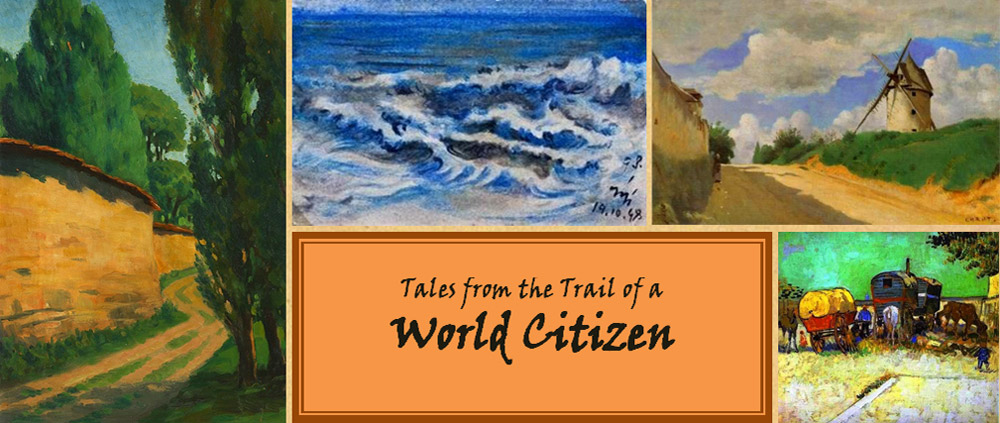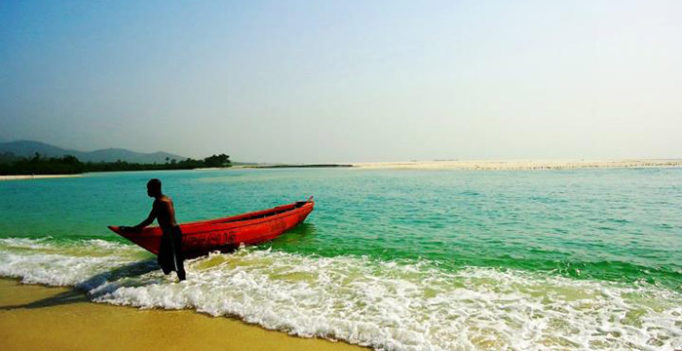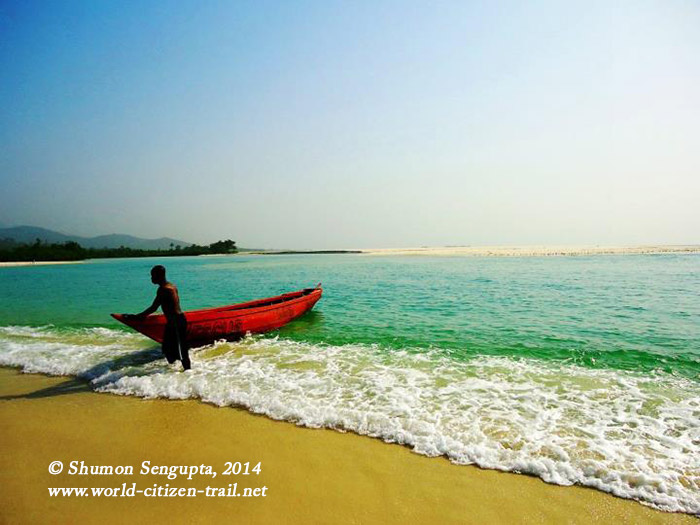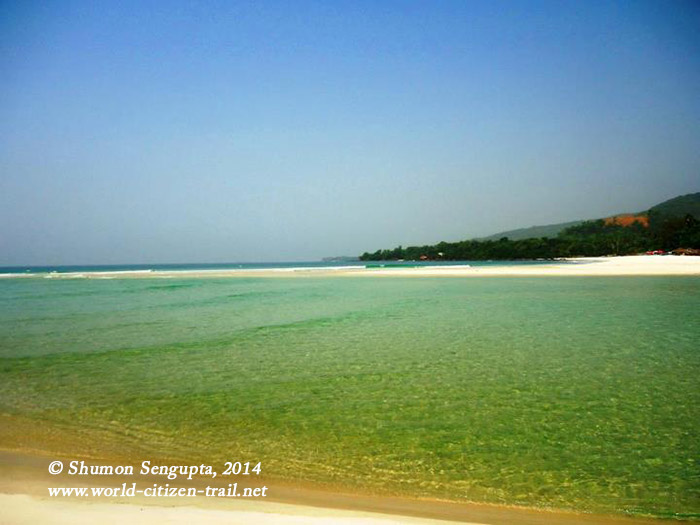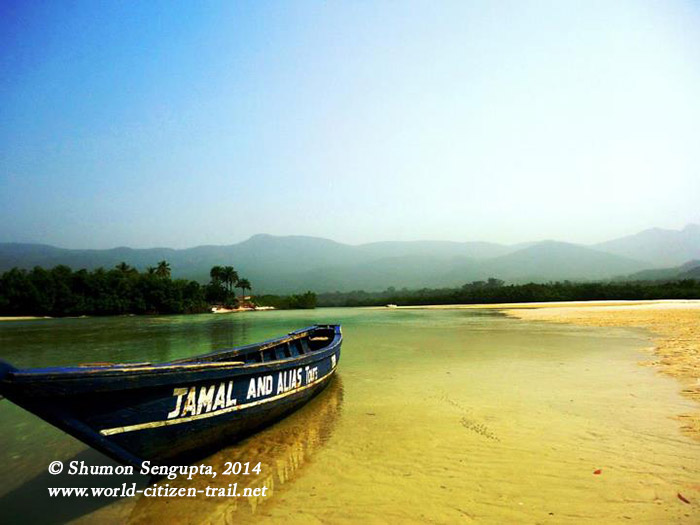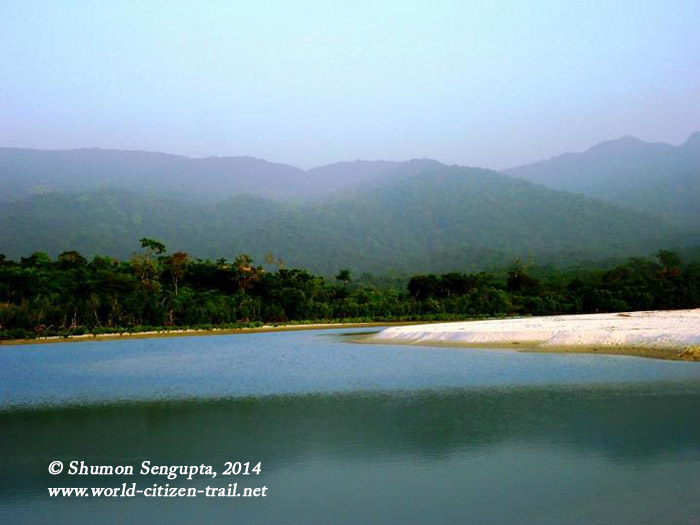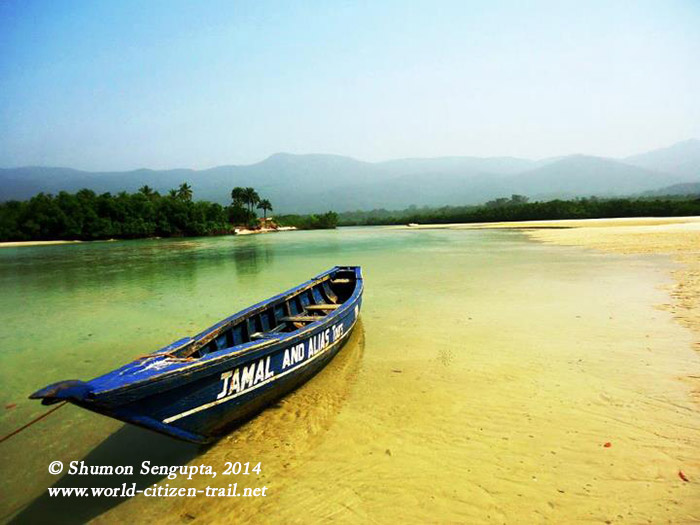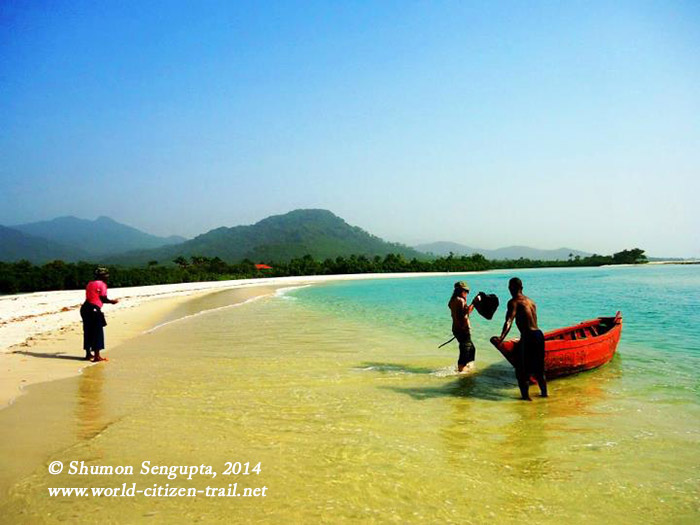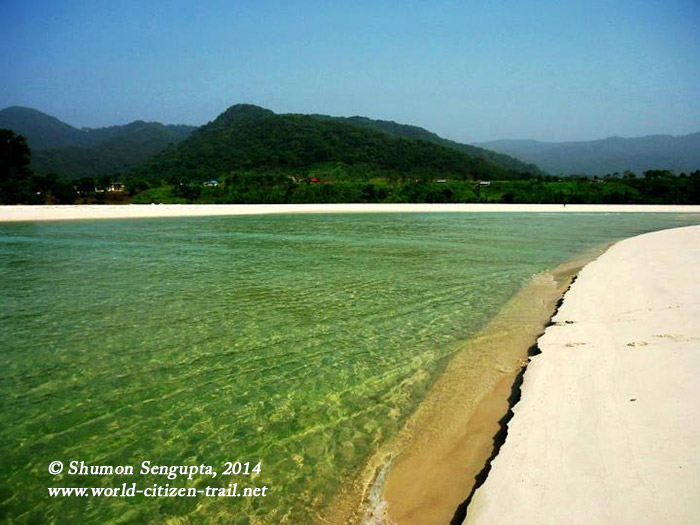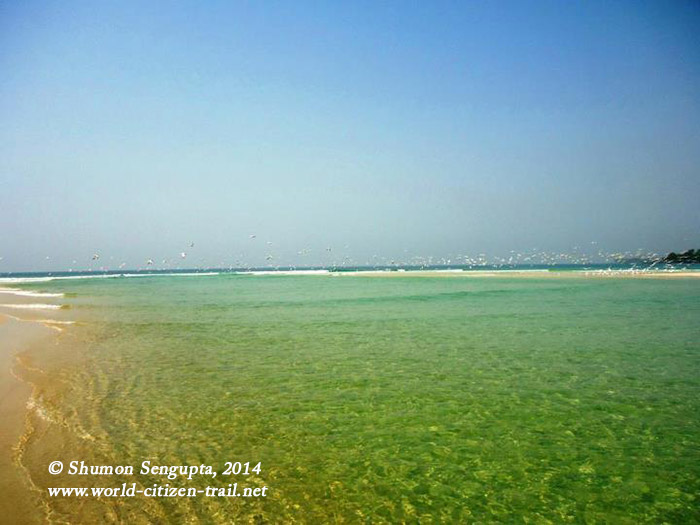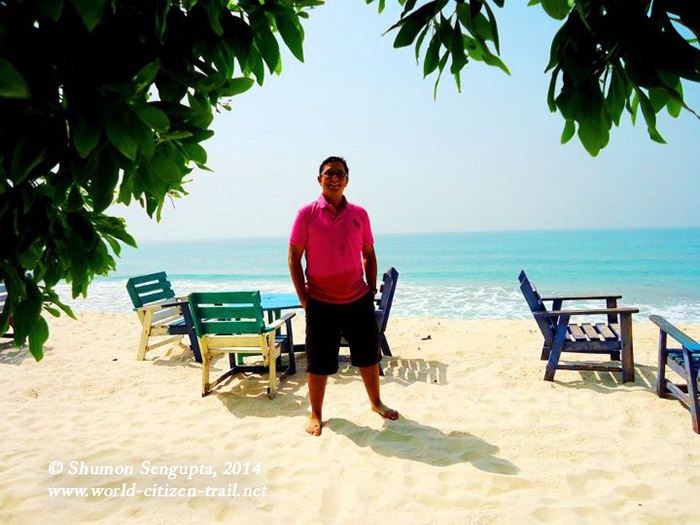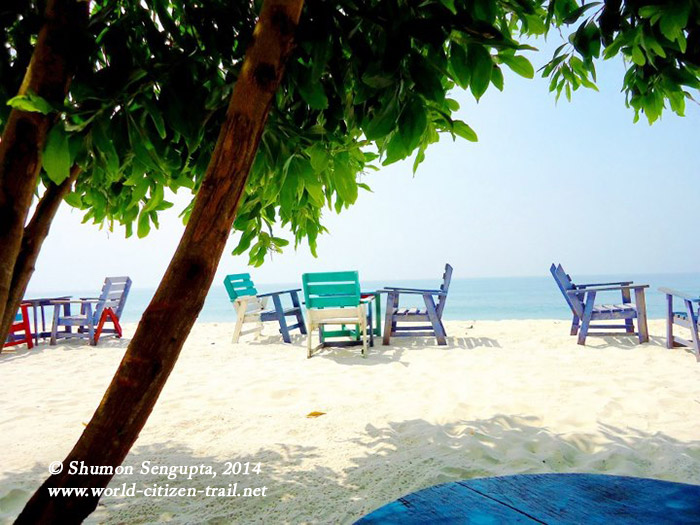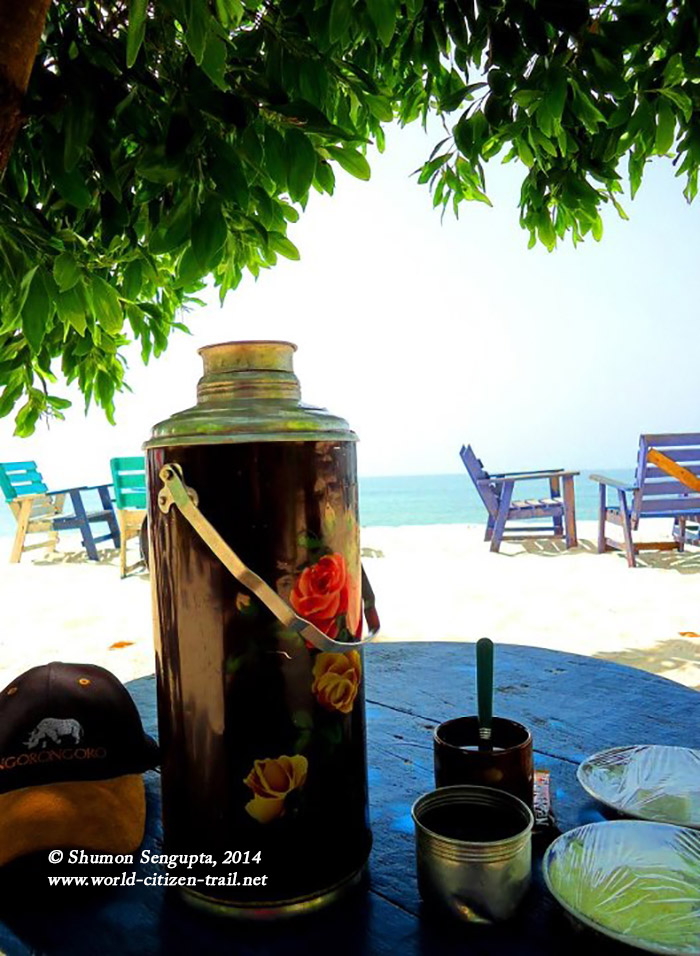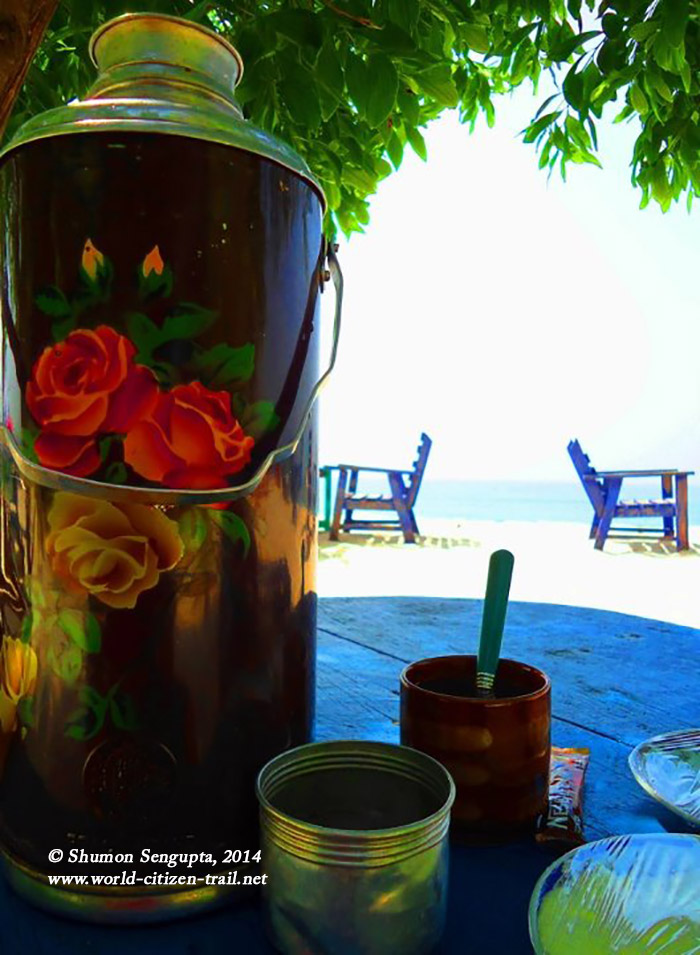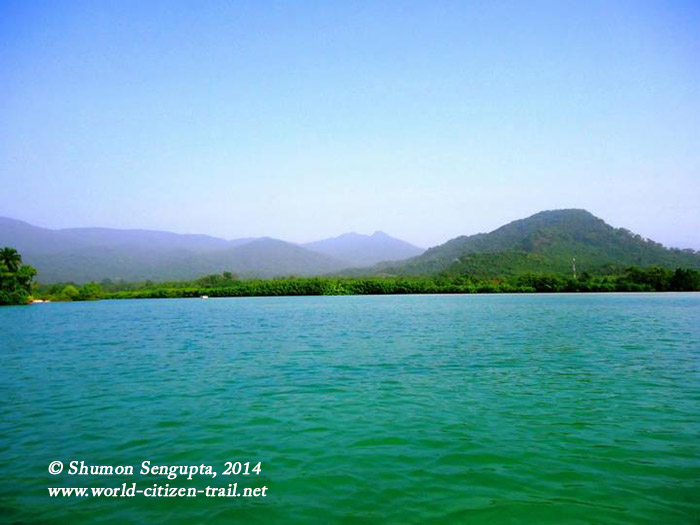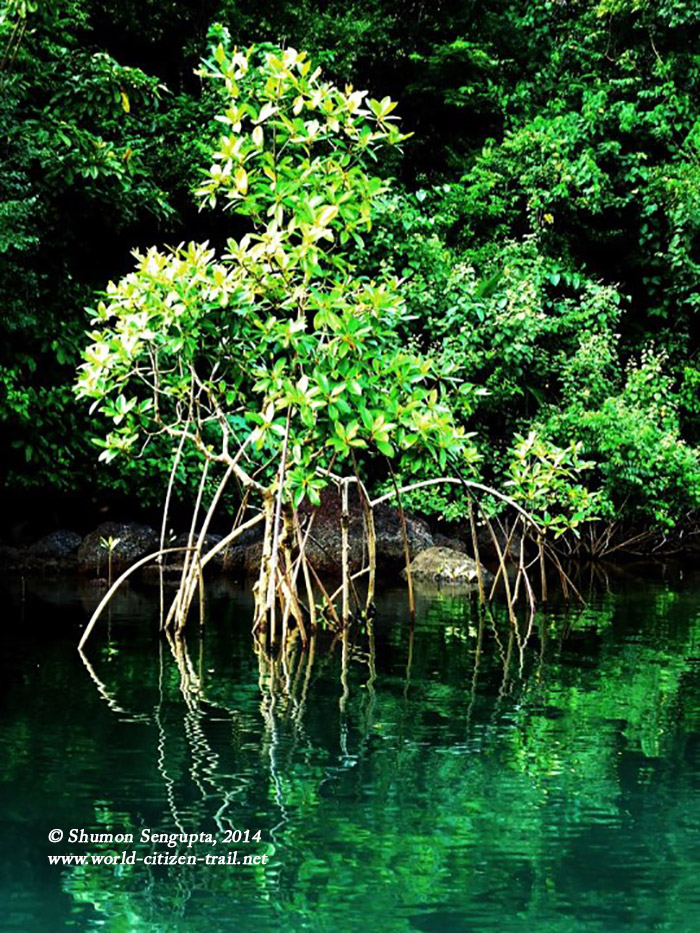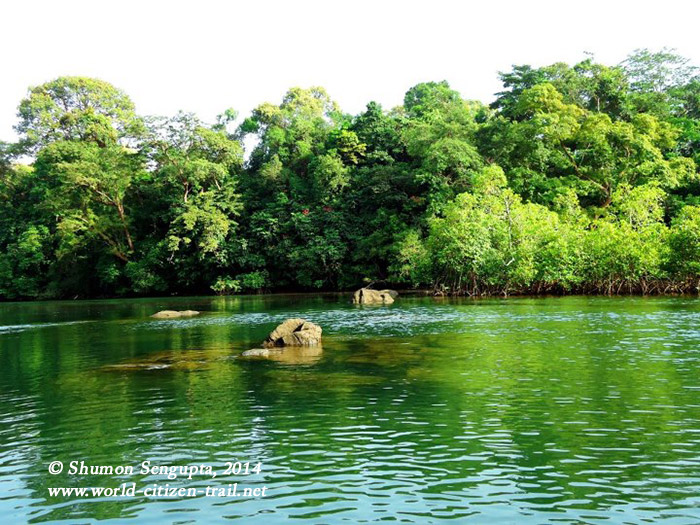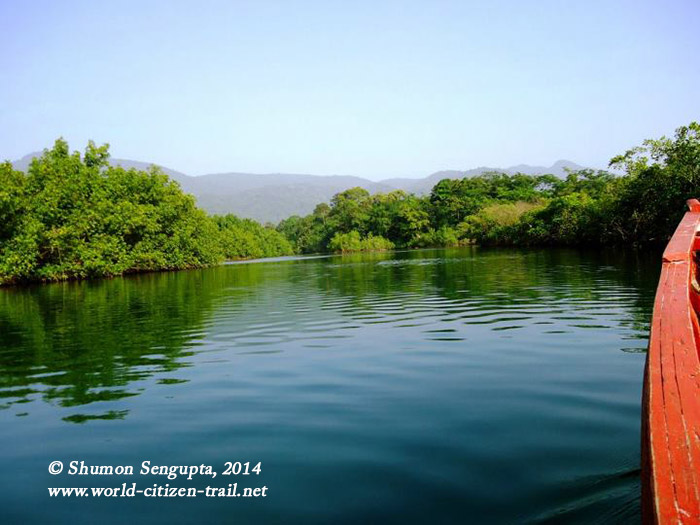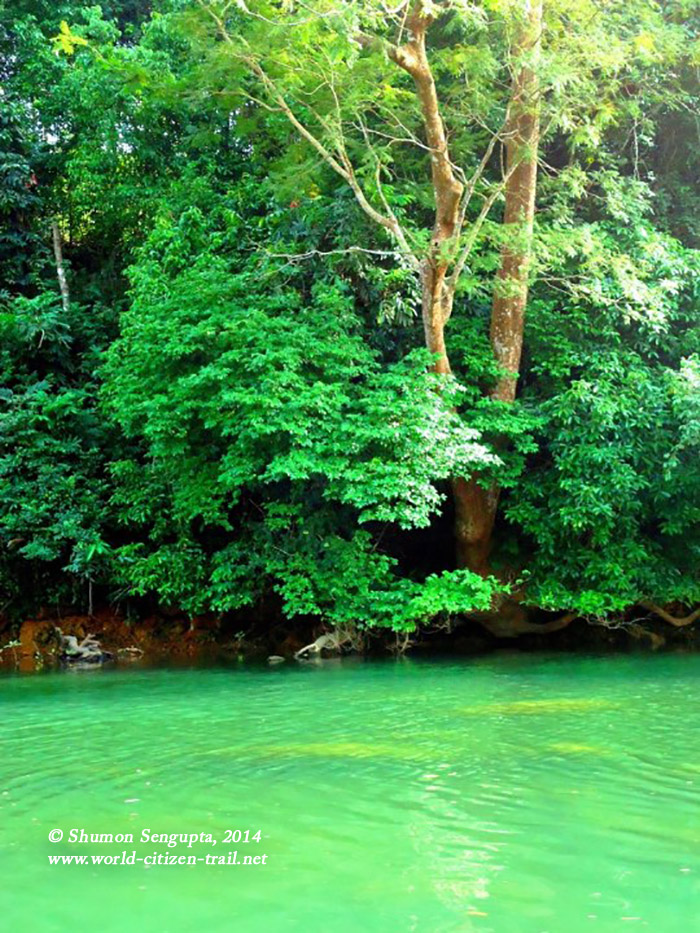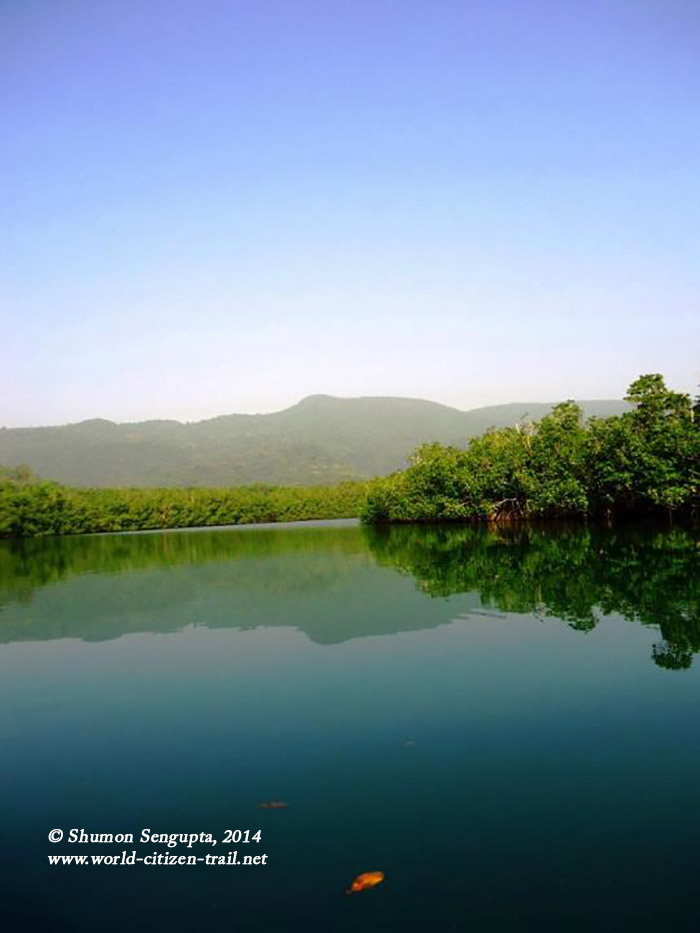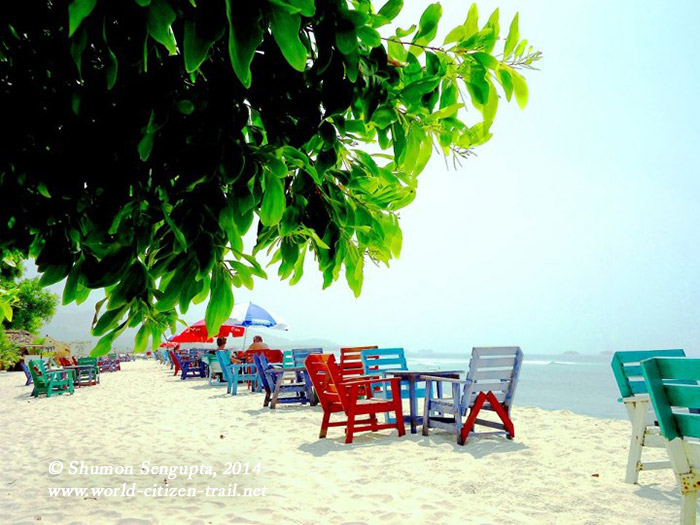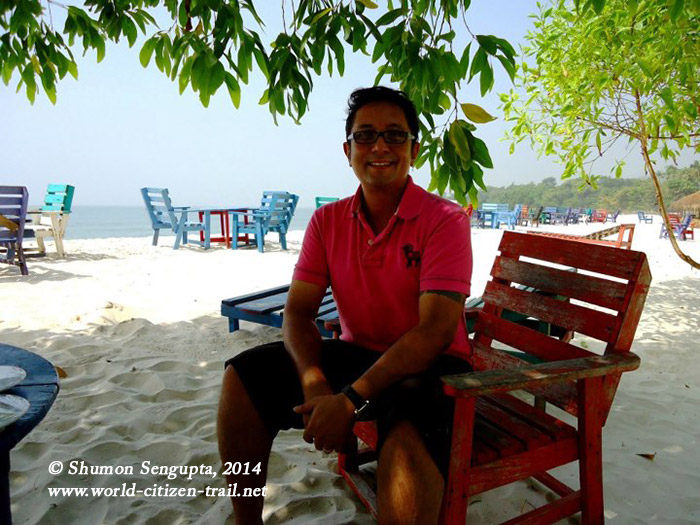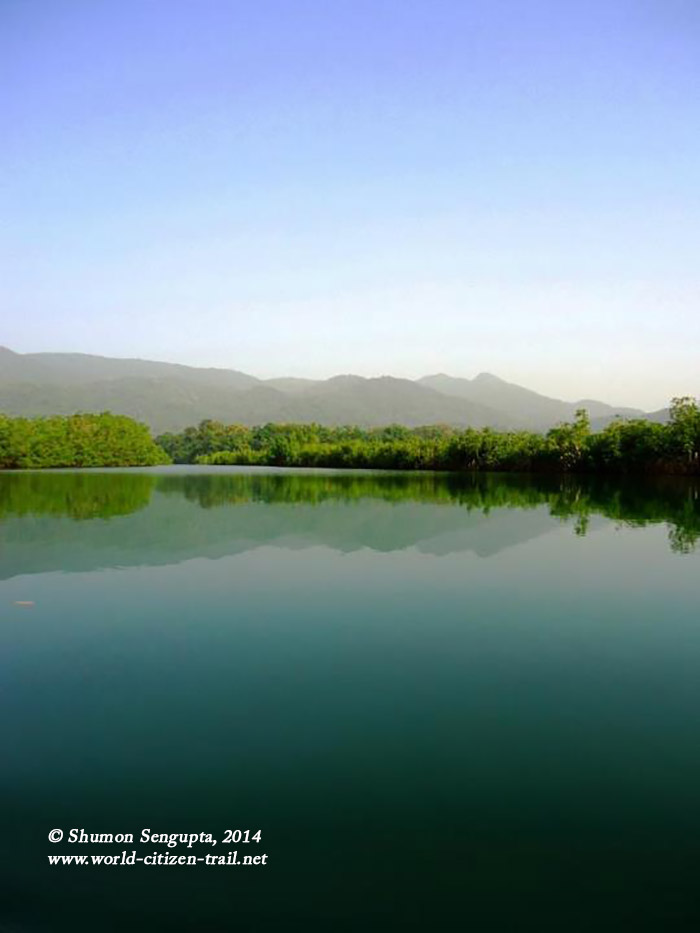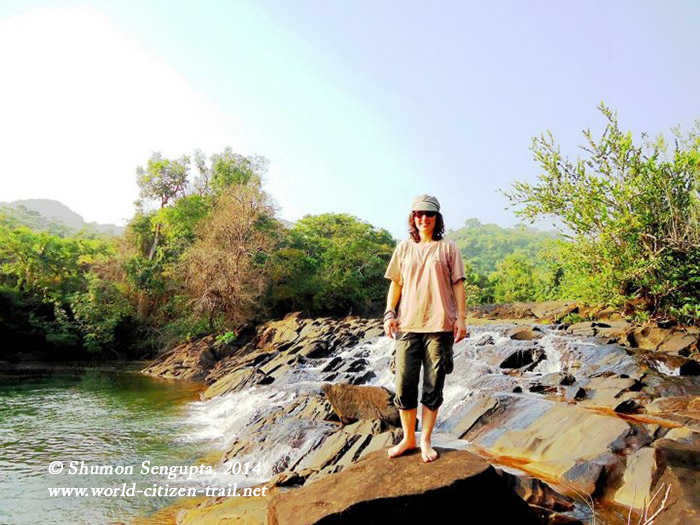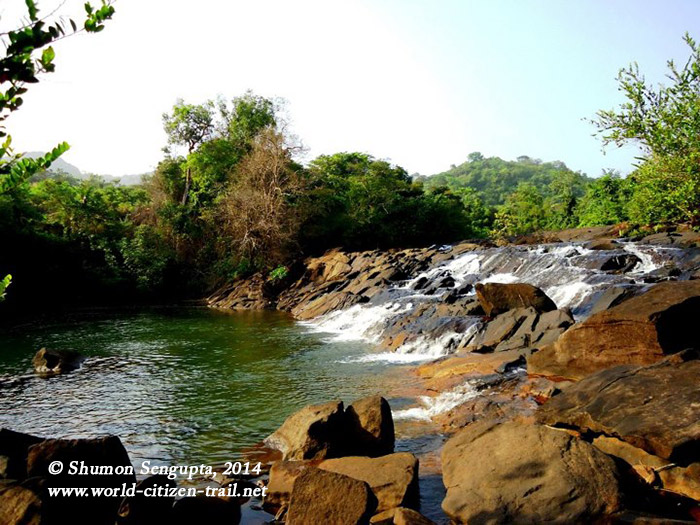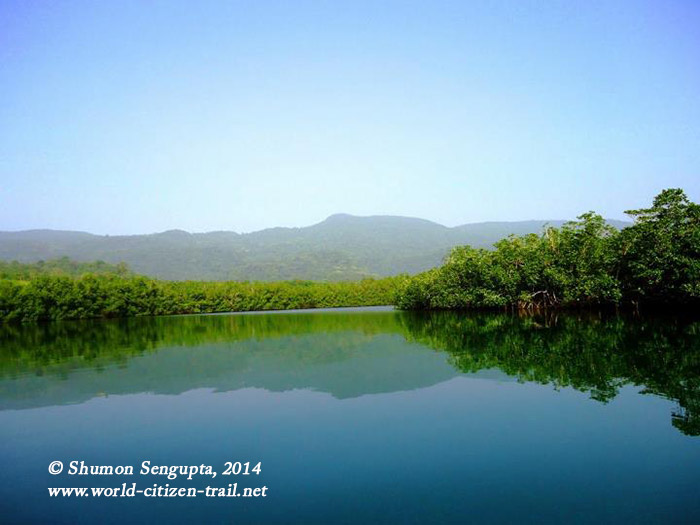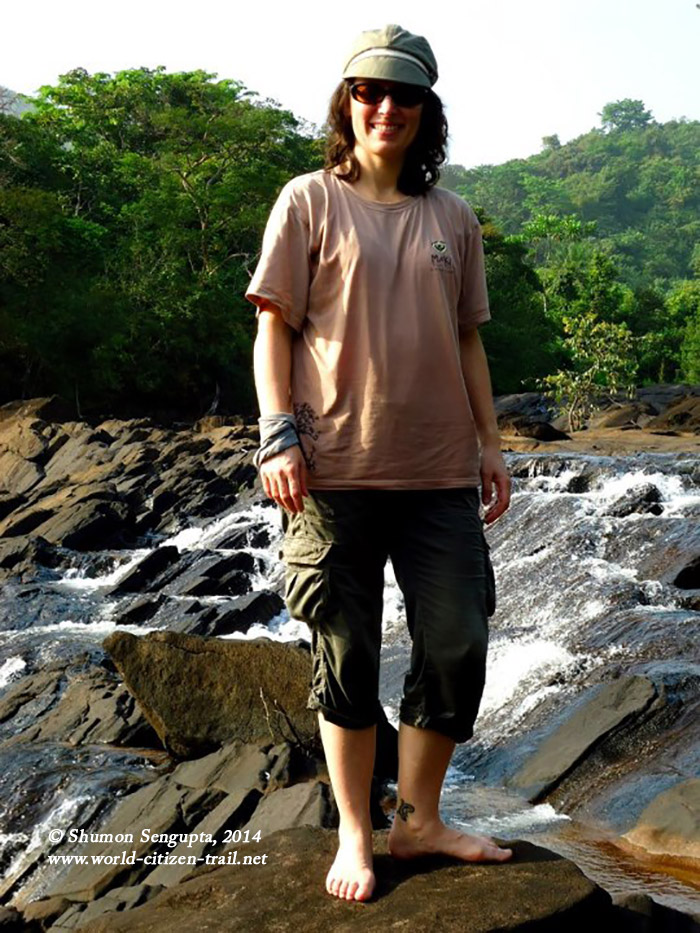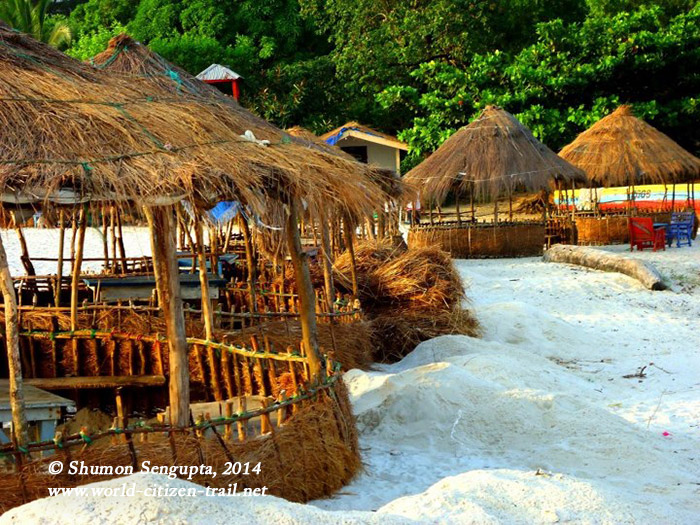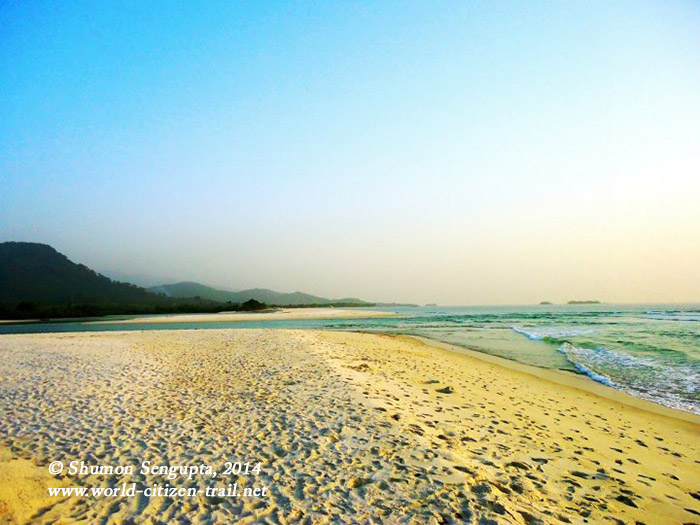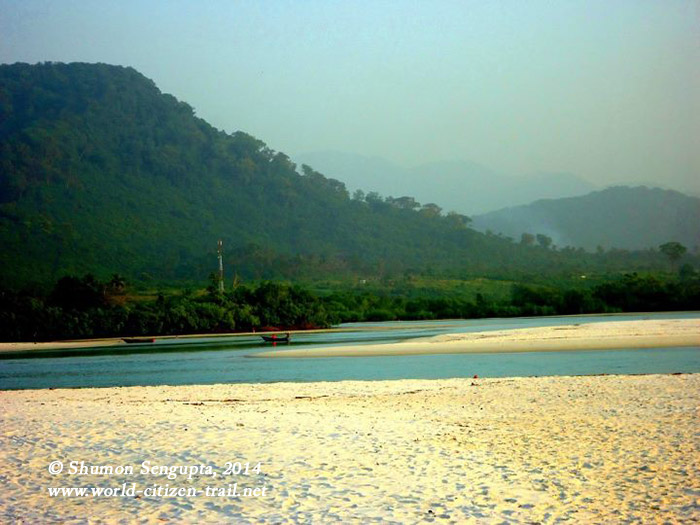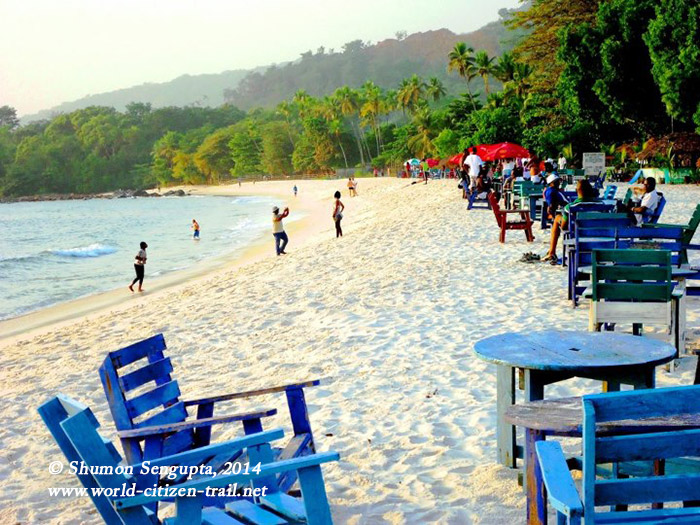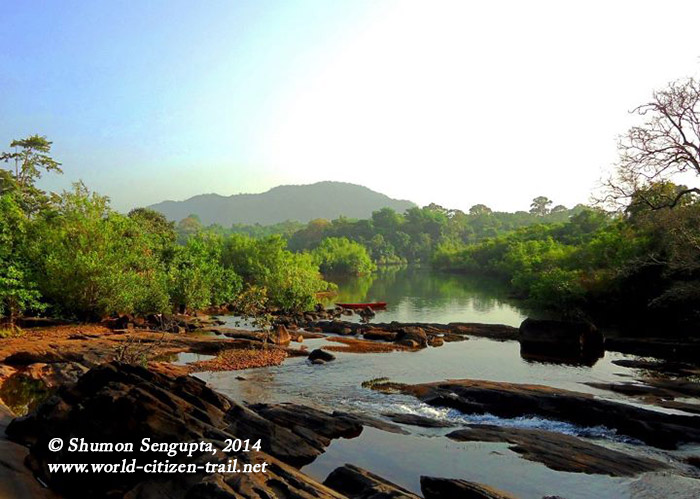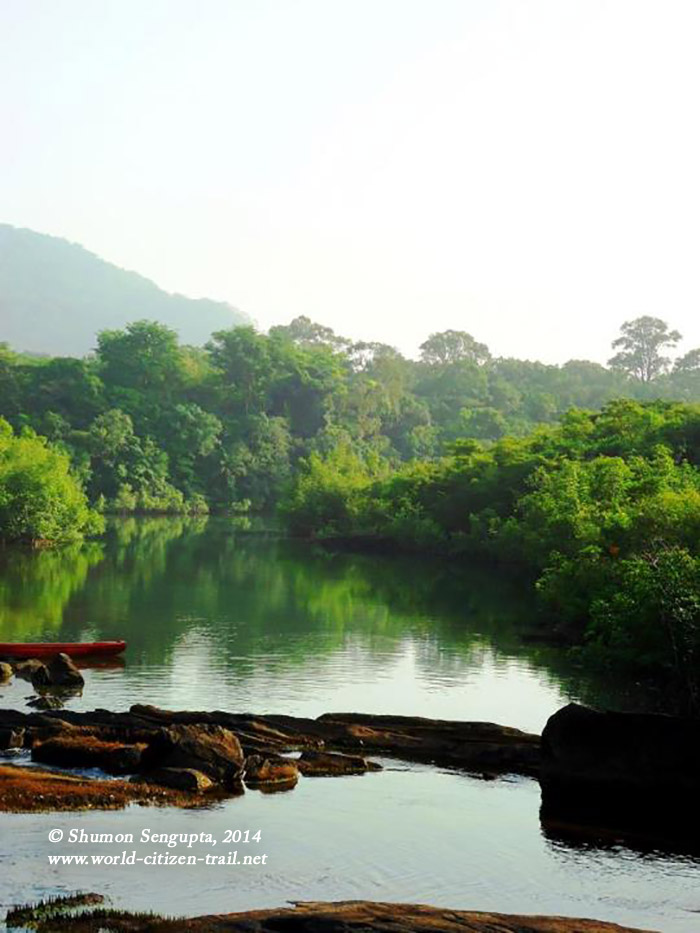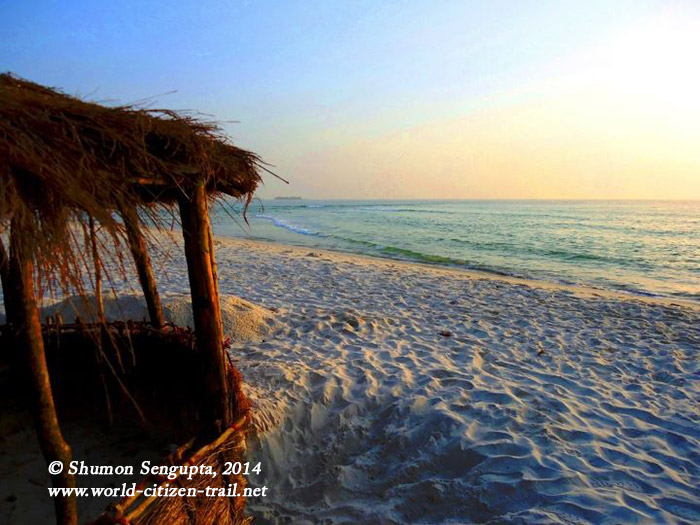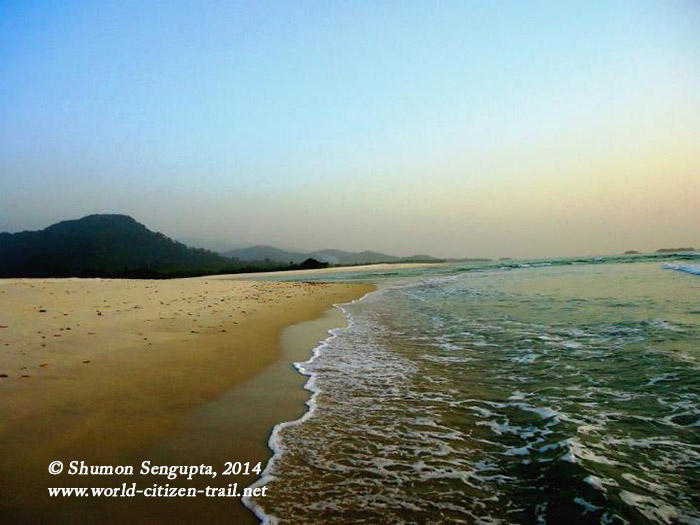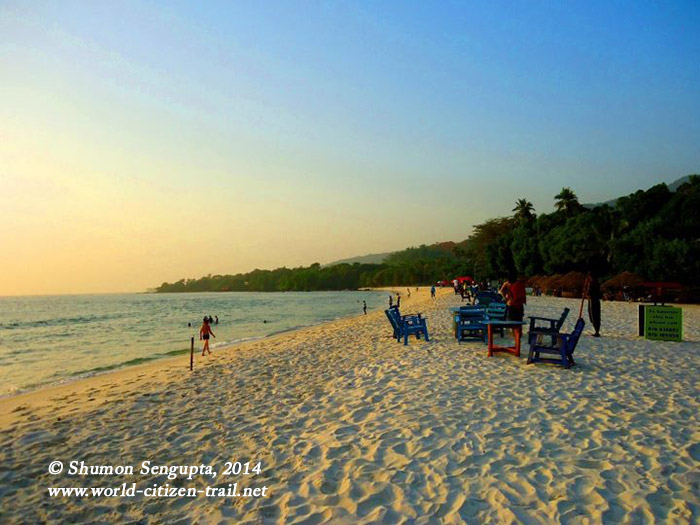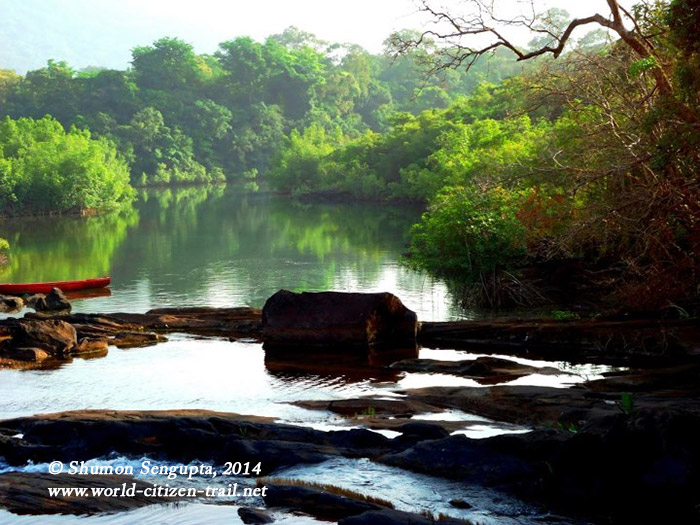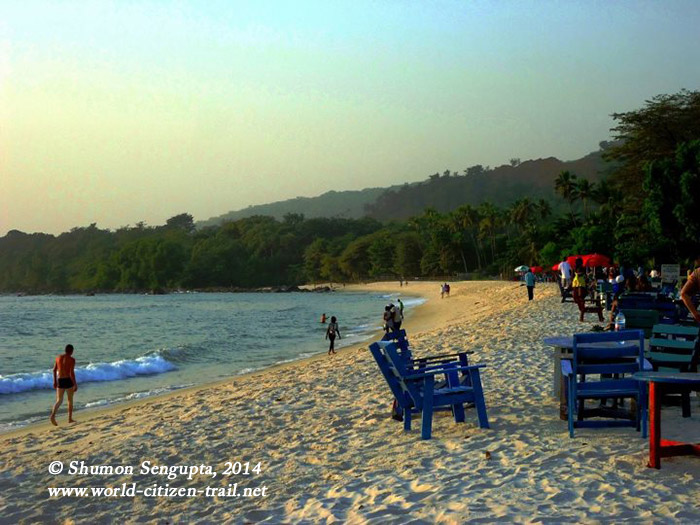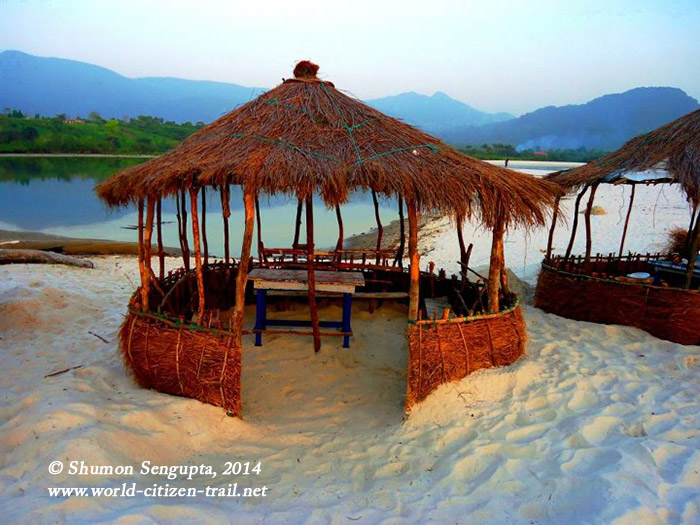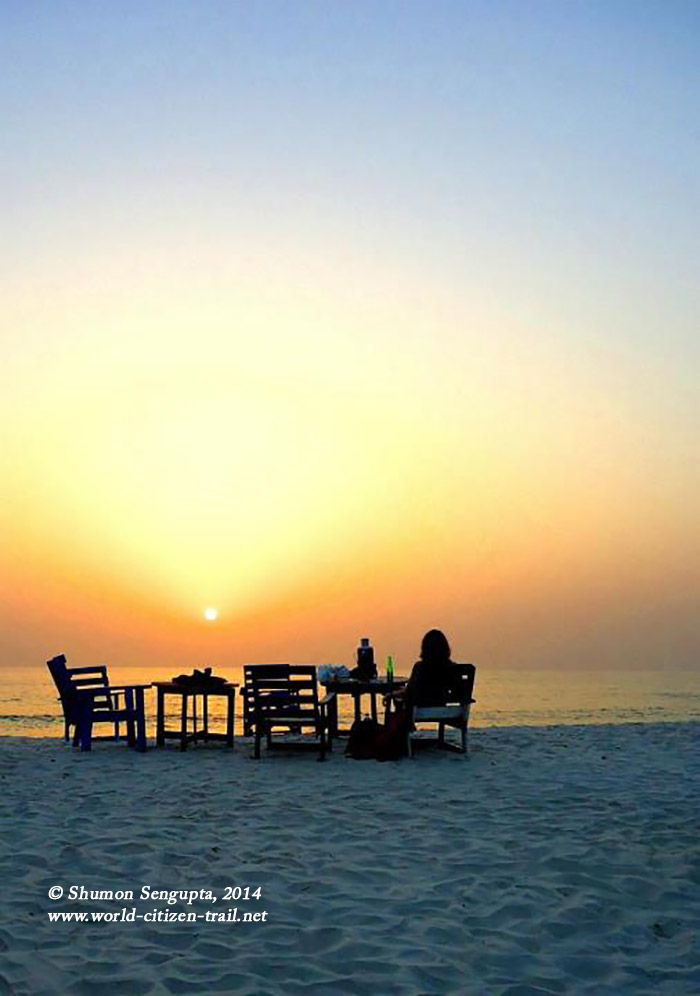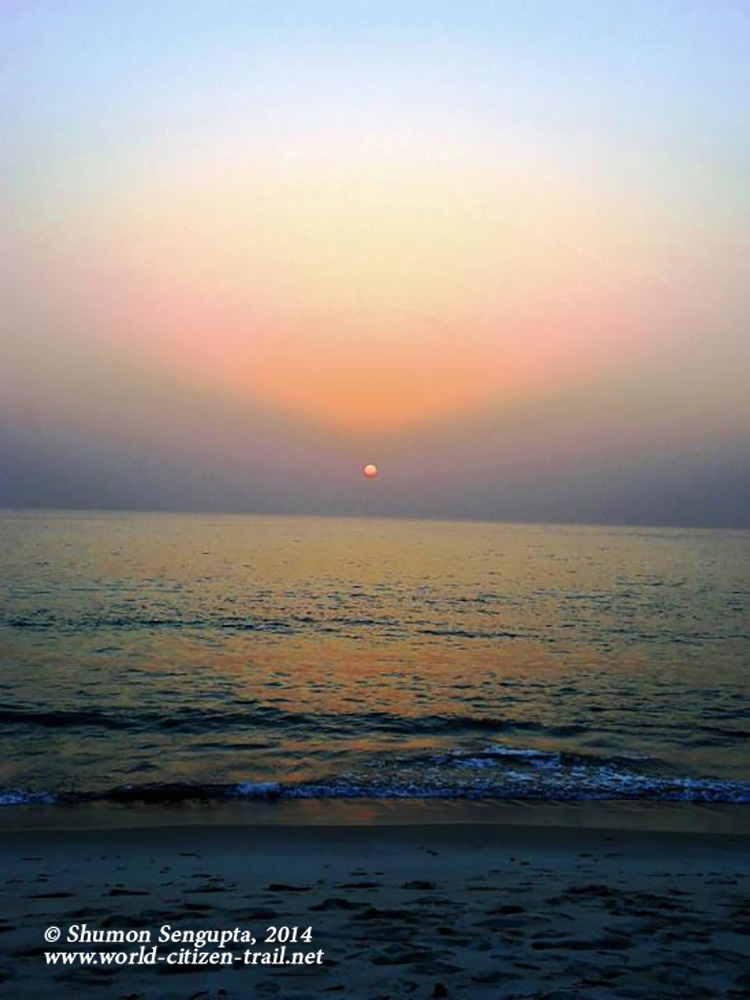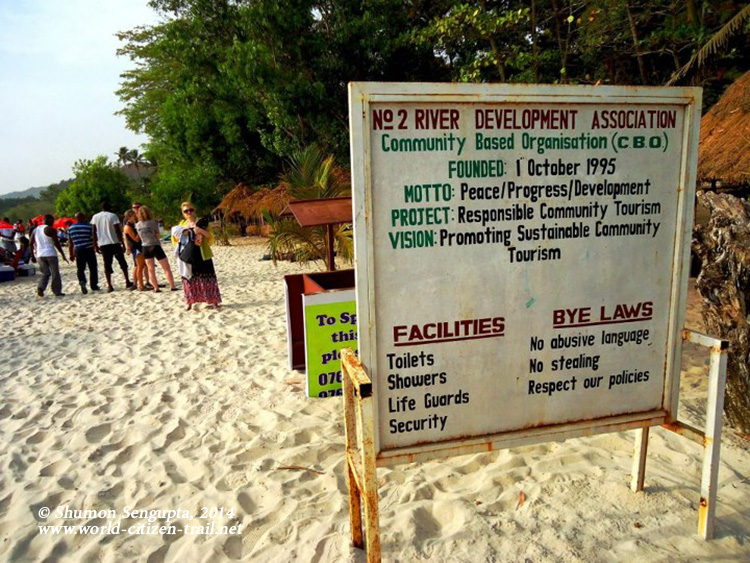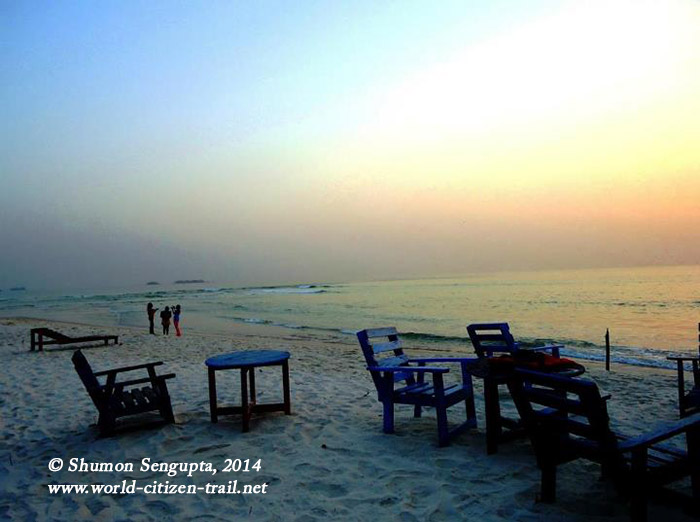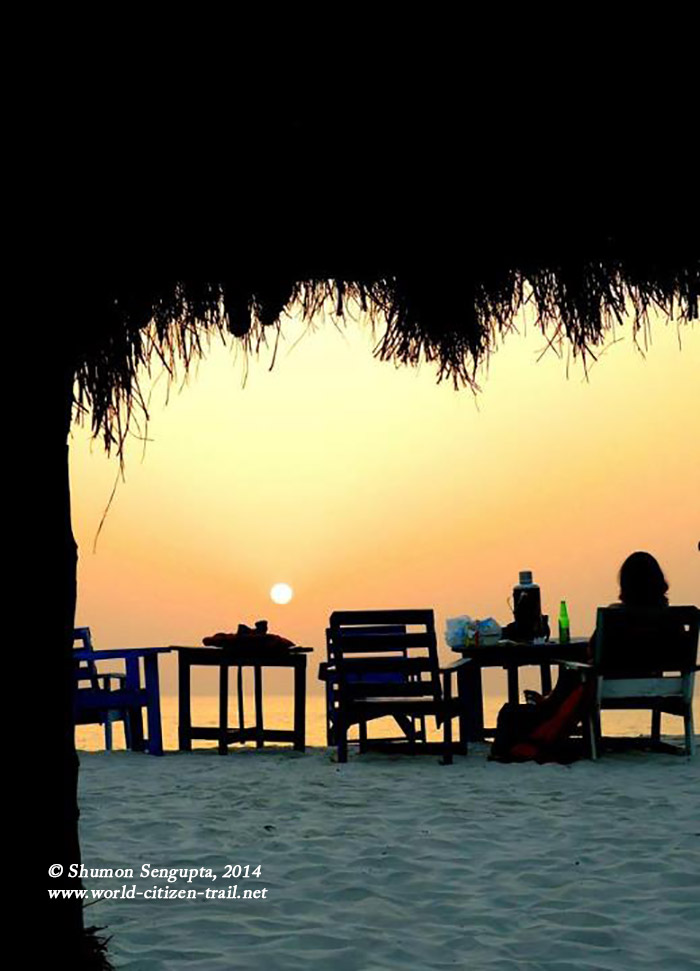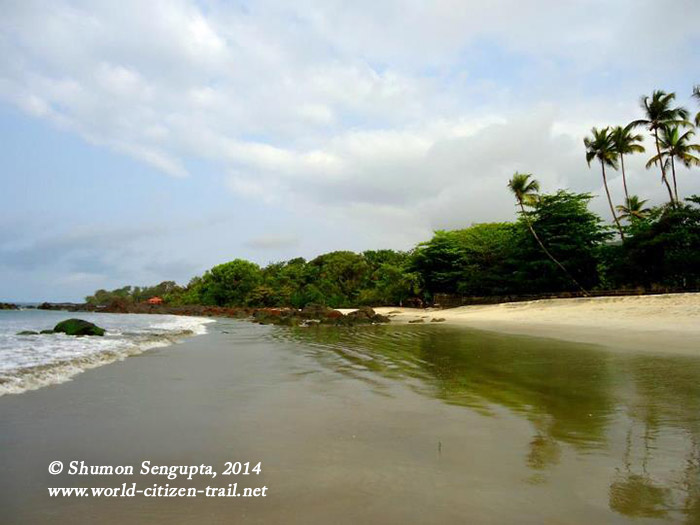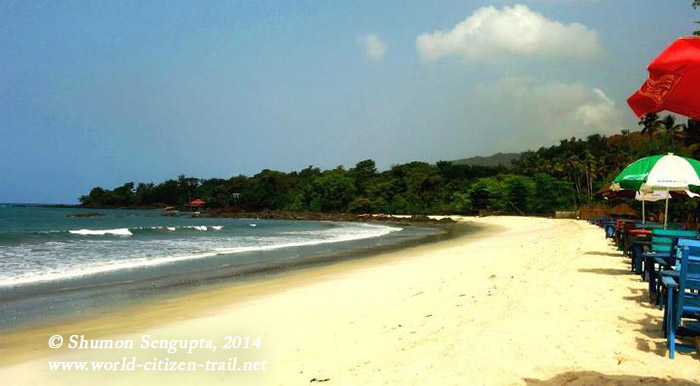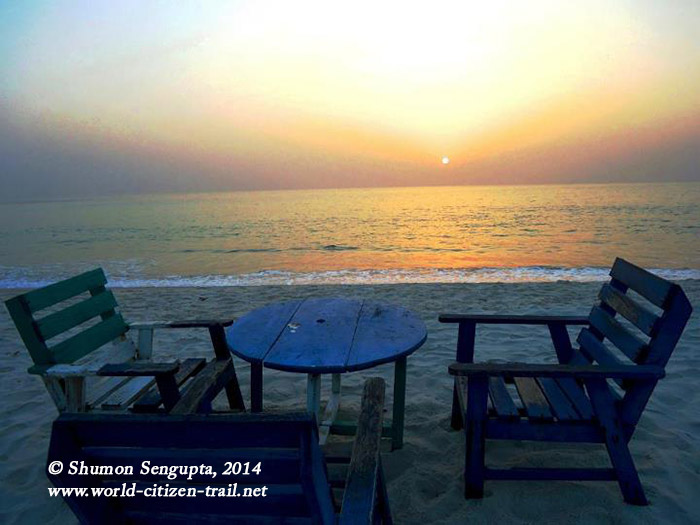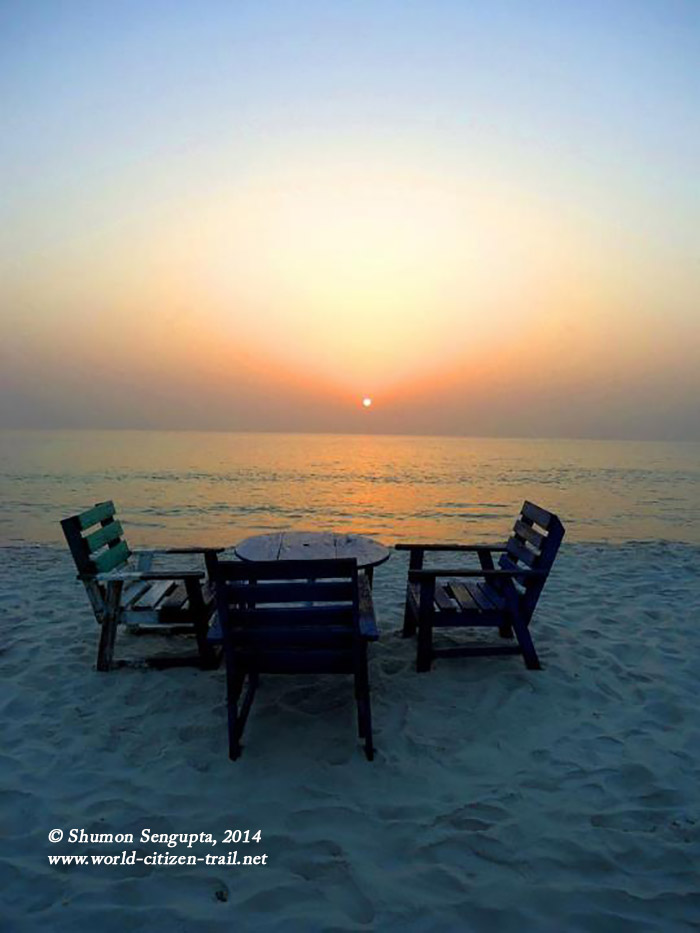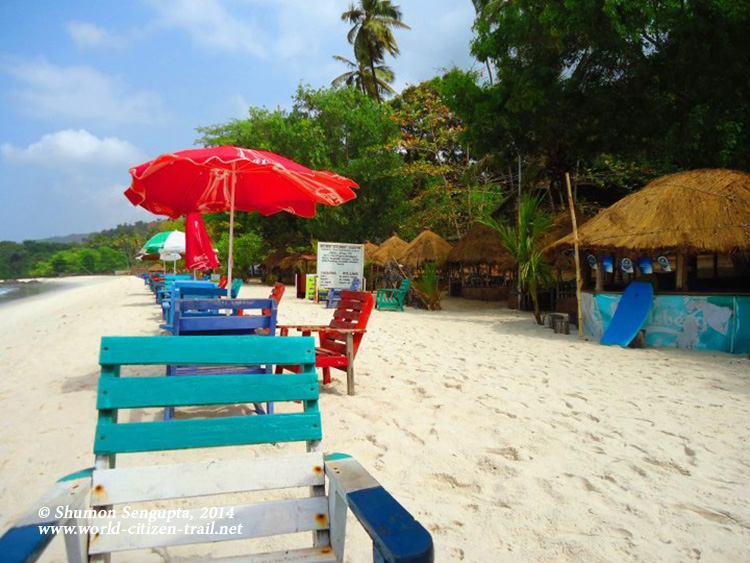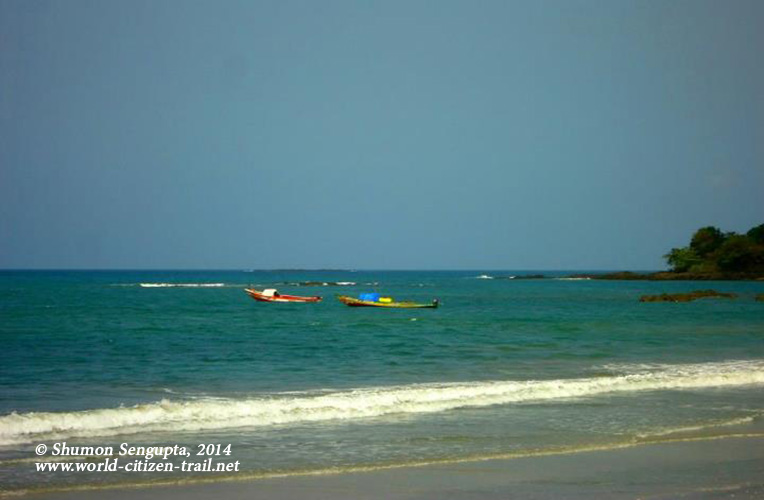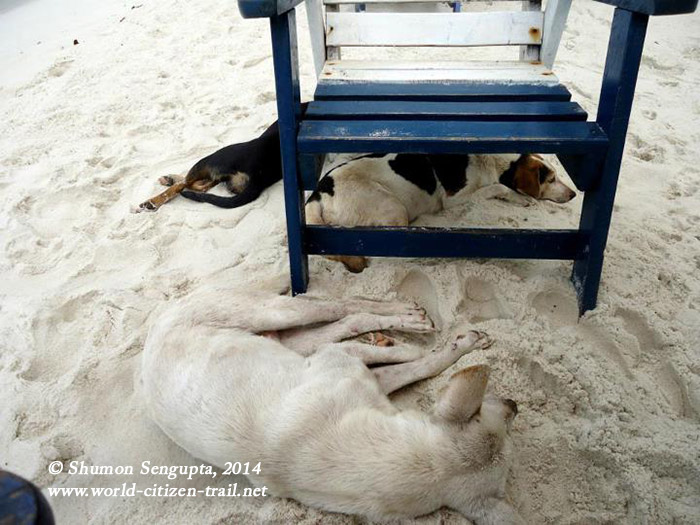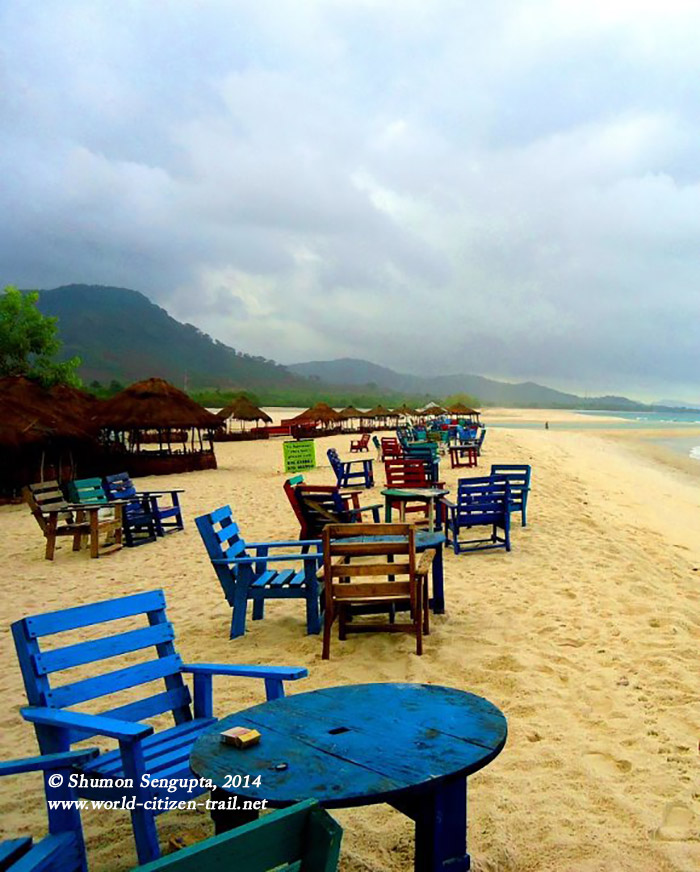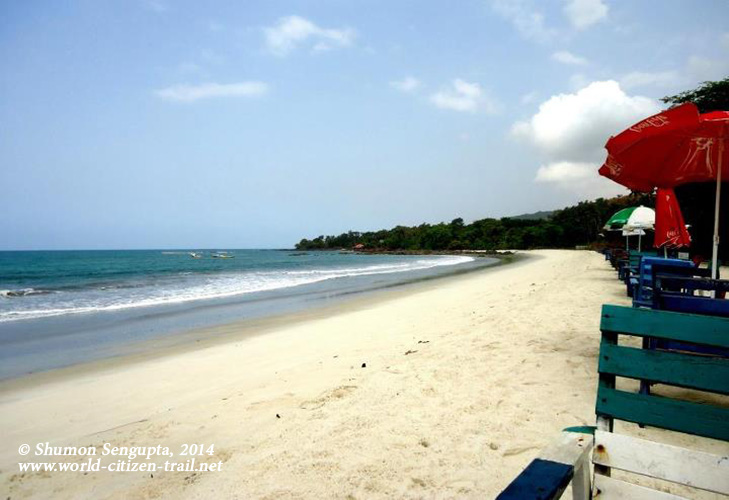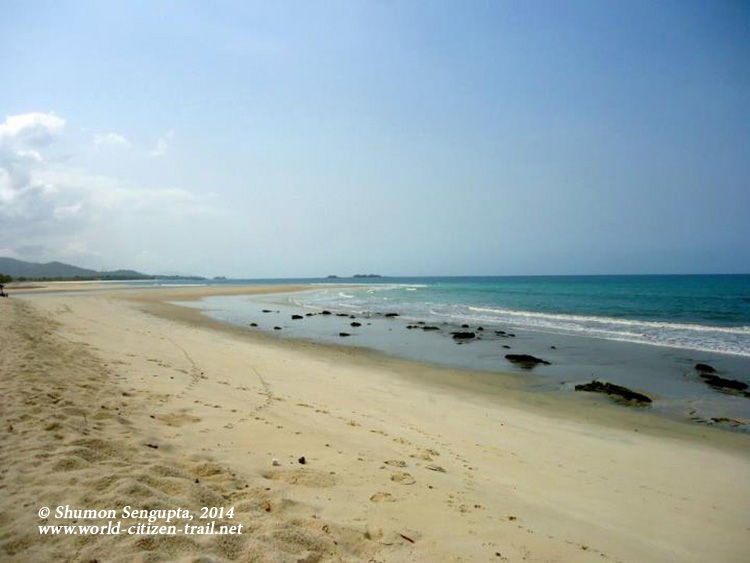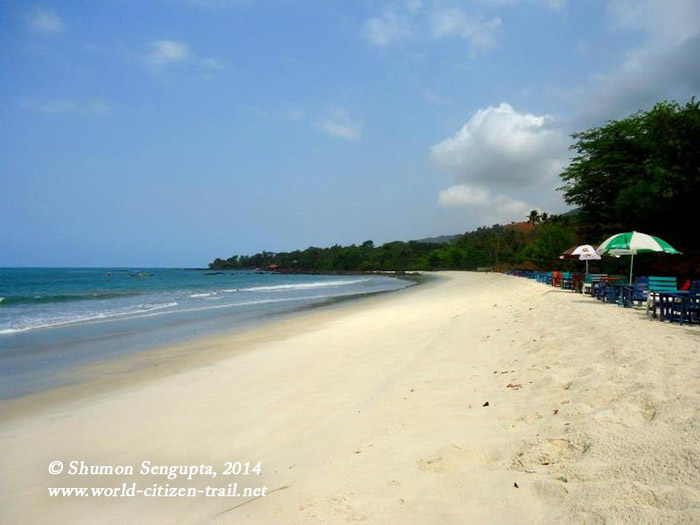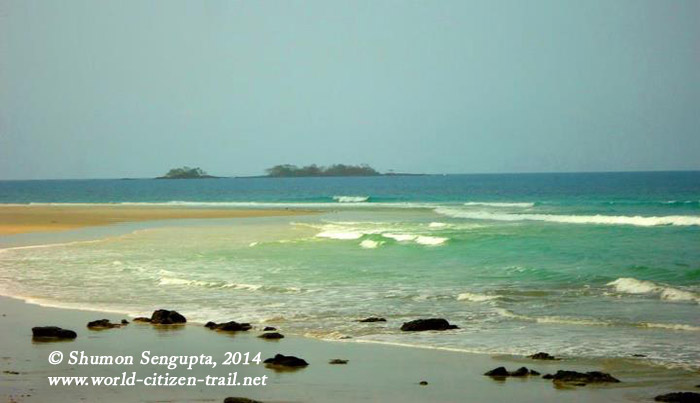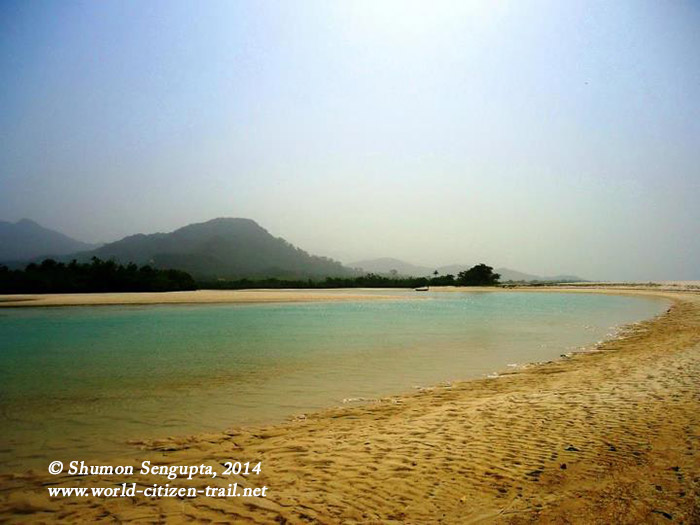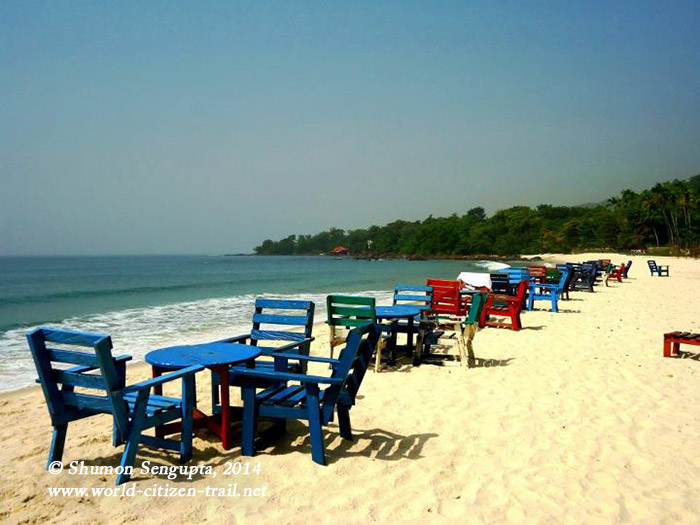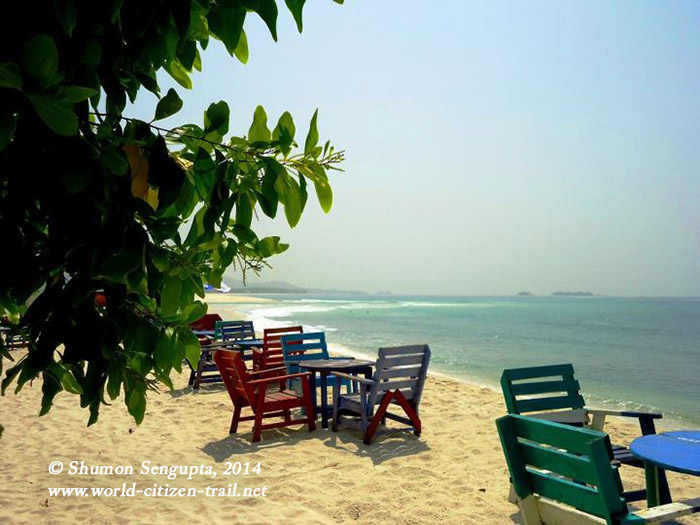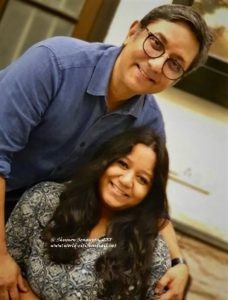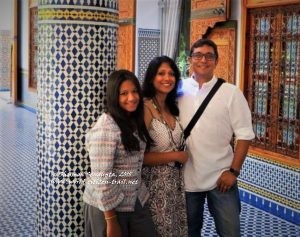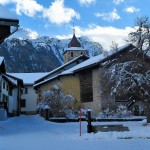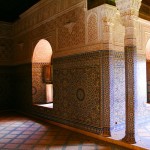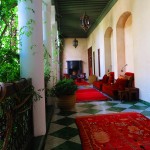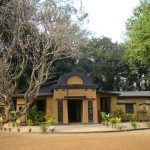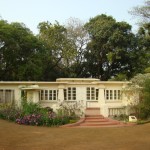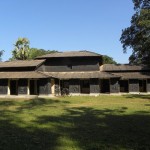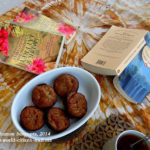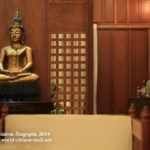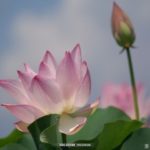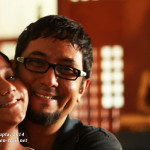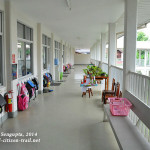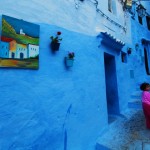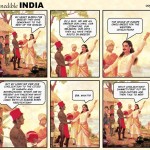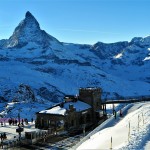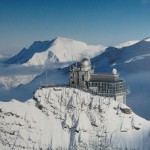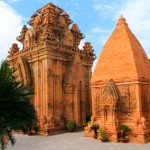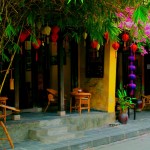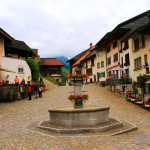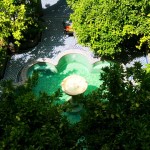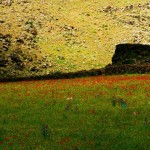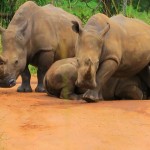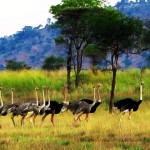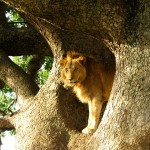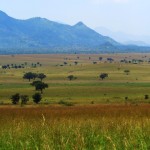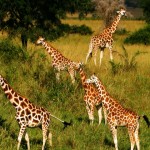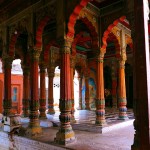For a small country, Sierra Leone is amazing in its sheer physical diversity. Mountains, forests, rivers, scrub land, islands, lagoons, mangroves and long stretches of pristine sandy beaches – name it and it has it.
In my view, the most spectacular feature of the country however is its sea coast along the Freetown peninsula. Empty expanses of golden yellow to ivory white sands fringed by hills on one side, rivers and streams descending from the hills, stretches of coconut palm and mango trees lining the sea shores, dugout canoes and colourful fishing boats, fishermen casting nets, small uninhabited islands doting the sea along the shore line and little sea side fishing villages with their fish markets on beach – all combine to conjure images of paradise on earth.
The beaches are numerous and each beach seems to have a special character or personality that is its very own. My favourite, among the few that I have been to so far is the Bureh-Town beach about which I have described in some detail in an album earlier. Bureh-Town beach is to me, the jewel on the crown of beaches in Sierra Leone. Having said that, another picture postcard beach is the Beach at the River Number 2, also called the River No. 2 Beach or even simply Beach No. 2.
If Bureh-Town beach is a pair of vast sweeps in gold, Beach on River no. 2 is a glorious expanse in ivory.
The sands in the River No. 2 Beach are white and in places have a powdery texture. With crystal clear, aquamarine and turquoise waters, lapping and crashing waves, colourful country fishing boats, the hills in the back drop, a river (named for some unknown reason, River no. 2) meandering through the sands and meeting the sea and a crystal like small lagoon – this beach has a stunning effect on the first time visitor. The shallow lagoon at the mouth of the river as it meets the sea can be waded through and beyond the lagoon is yet another long and wide stretch of secluded white sands.
The first time I visited the Beach on River no. 2 was on a Saturday morning, with a colleague – Karin Jaquin who was visiting from our head office in London. Barely a forty minutes drive from the place in Freetown where I live, we arrived at the beach around eleven in the morning. The beach was almost deserted, but for an elderly foreigner couple. After booking our table, we walked along the beach towards the small lagoon. We waded carefully though the waist deep waters across the lagoon and explored the wide stretch of sand beyond.
Soon the mid day sun was over our heads and we decided to get back under shade, to venture out again, when the sun is less intense.
We got back to our table on the beach and requested a canopy umbrella. I had my Darjeeling tea and Banana bread with me – all I needed was some hot water which was supplied by the people who ran the restaurant on the beach. Karin ordered for grilled fish, rice and salad. We chatted from time to time, but most of the time we were silent, I reading a book and Karen gazing out at the wide expanse of the sea and taking some notes from time to time.
In addition to the natural splendour of the place, a unique feature of this beach is the long row of brilliantly painted wooden beach chairs and tables, which strikes a flamboyant contrast to the ivory white sands. I have previously photographed different kinds and formations of country boats. In this trip, it is the vibrant and colourful wooden chairs and tables that commanded the attention of my camera. To me, seen from different angles, the clusters of chairs and tables along the beach come across as a massive work of installation art. I shall however let my readers judge this for themselves.
Around three in the afternoon, we hired a country boat and cruised up the river, through the mangrove forests that lie behind the beach. We wanted to reach the headwater of the river – a small waterfall draining into a small lake. During the boat ride which took about 45 minutes, we passed through groups of monkeys at the water’s edge and a host of birds unique to this niche, including the white-neck Picathartes. The colour of the water kept changing depending on the depth of the river and the clouds up in the sky. At places we passed through vast expanses of tender stillness where the silence was only broken by the gentle lapping of the oar and the occasional call of the birds and the monkeys.
We could hear the waterfalls even before we could see it. Guided by our boatman, we clambered up the rocks and explored the waterfalls. Afternoon progressed to early evening and it was soon time to return our “base camp” on beach. Needless to say, our return journey down stream was much quicker.
Relaxing on beach over chilled beer and Darjeeling tea, Karin and I chatted about work, about travel, about our respective families. Most of the time, however, we just sat in silence, soaking in the last rays of the sun setting over the glorious North Atlantic Ocean.
